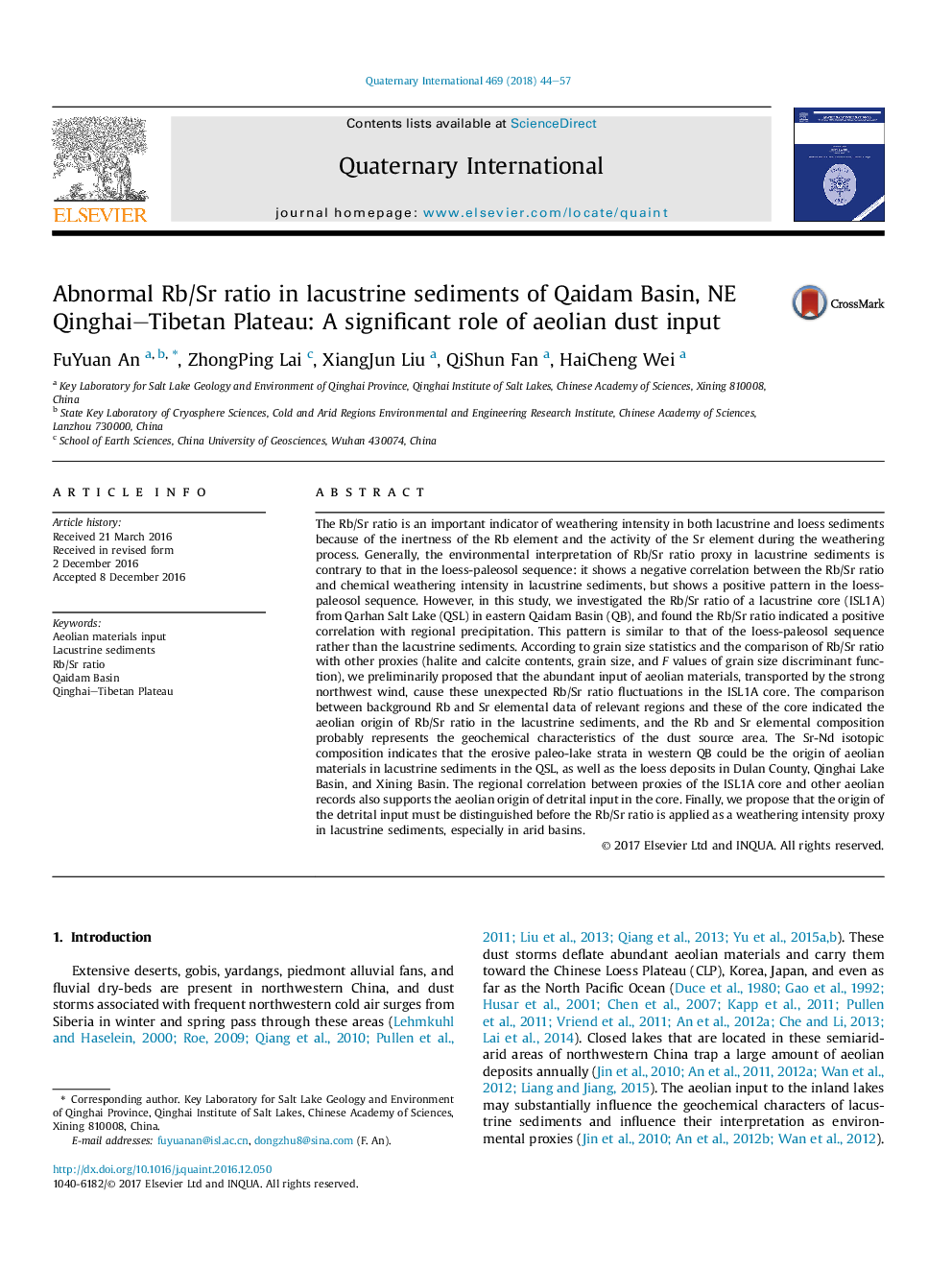| Article ID | Journal | Published Year | Pages | File Type |
|---|---|---|---|---|
| 7450330 | Quaternary International | 2018 | 14 Pages |
Abstract
The Rb/Sr ratio is an important indicator of weathering intensity in both lacustrine and loess sediments because of the inertness of the Rb element and the activity of the Sr element during the weathering process. Generally, the environmental interpretation of Rb/Sr ratio proxy in lacustrine sediments is contrary to that in the loess-paleosol sequence: it shows a negative correlation between the Rb/Sr ratio and chemical weathering intensity in lacustrine sediments, but shows a positive pattern in the loess-paleosol sequence. However, in this study, we investigated the Rb/Sr ratio of a lacustrine core (ISL1A) from Qarhan Salt Lake (QSL) in eastern Qaidam Basin (QB), and found the Rb/Sr ratio indicated a positive correlation with regional precipitation. This pattern is similar to that of the loess-paleosol sequence rather than the lacustrine sediments. According to grain size statistics and the comparison of Rb/Sr ratio with other proxies (halite and calcite contents, grain size, and F values of grain size discriminant function), we preliminarily proposed that the abundant input of aeolian materials, transported by the strong northwest wind, cause these unexpected Rb/Sr ratio fluctuations in the ISL1A core. The comparison between background Rb and Sr elemental data of relevant regions and these of the core indicated the aeolian origin of Rb/Sr ratio in the lacustrine sediments, and the Rb and Sr elemental composition probably represents the geochemical characteristics of the dust source area. The Sr-Nd isotopic composition indicates that the erosive paleo-lake strata in western QB could be the origin of aeolian materials in lacustrine sediments in the QSL, as well as the loess deposits in Dulan County, Qinghai Lake Basin, and Xining Basin. The regional correlation between proxies of the ISL1A core and other aeolian records also supports the aeolian origin of detrital input in the core. Finally, we propose that the origin of the detrital input must be distinguished before the Rb/Sr ratio is applied as a weathering intensity proxy in lacustrine sediments, especially in arid basins.
Related Topics
Physical Sciences and Engineering
Earth and Planetary Sciences
Geology
Authors
FuYuan An, ZhongPing Lai, XiangJun Liu, QiShun Fan, HaiCheng Wei,
